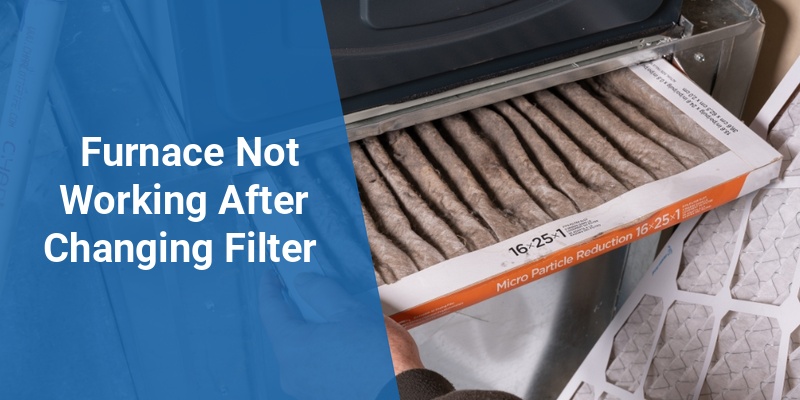When the furnace fails to operate after changing the filter, it can cause discomfort and confusion for homeowners. Several common issues such as improper filter installation, airflow restrictions, or safety switch tripping could be behind the problem. Understanding these causes helps in identifying the right solution quickly. This article provides detailed troubleshooting steps, preventive tips, and expert advice to help get the furnace running efficiently again.
| Common Causes | Symptoms | Recommended Actions |
|---|---|---|
| Incorrect Filter Installation | Furnace won’t start or cycles on and off | Reinstall filter with correct airflow direction |
| Clogged or Dirty Filter | Reduced airflow and overheating | Replace filter with high-quality, clean filter |
| Safety Switch Activation | Furnace blower or heater doesn’t activate | Check and reset door or panel switches |
| Blower Motor Issues | No airflow despite furnace running | Inspect motor and capacitor or call technician |
Common Reasons a Furnace Stops Working After Filter Change
Changing the furnace filter, although a simple maintenance step, can sometimes lead to unexpected malfunctions. One of the most frequent issues is incorrect filter placement. Filters often have directional arrows indicating airflow which must align with the furnace’s system. Installing a filter backward restricts airflow, causing the furnace to overheat or shut down.
Another common reason is using the wrong filter type or size. A filter too thick or dense can interfere with airflow requirements, leading to system strain. Additionally, if debris or dirt enters the system during filter replacement, it may trigger safety features or clog components causing operational failure.
Safety switches located on doors and panels may trip if not properly secured after filter installation. This is a built-in precaution to avoid running the system when panels are open or improperly attached. Finally, electrical faults or blower motor issues coinciding with filter replacement can cause the furnace to stop working as well.
Step-by-Step Troubleshooting Guide
Verify Proper Filter Installation
Start by ensuring the filter is inserted with the correct airflow direction. Most filters have arrows marking the airflow. Align these arrows to point toward the furnace blower.
If you are unsure, refer to the furnace manual or filter packaging. An incorrectly installed filter can block air intake causing overheating and automatic shutdown.
Inspect the Filter Quality and Condition
Check if the new filter is of the recommended size and type for your furnace. Using a too-dense filter can greatly reduce airflow leading to system inefficiencies.
Call 888-906-9139 for Free Local HVAC Quotes – No Obligation, Just Savings!
If the filter looks dirty or damaged, replace it immediately. Regular replacement of filters is crucial to maintain furnace efficiency and airflow.
Check Safety Switches and Panels
Open and close furnace access panels to ensure all switches engage properly. Some furnaces contain door sensors that prevent operation if panels are loose or not fully closed.
Reset any tripped safety switches by opening and closing the panels securely. This action may restore the furnace’s functionality.
Examine Blower Motor Function
Turn the furnace on and listen for blower motor activity. If the motor does not run or makes unusual noises, it may be damaged or the capacitor might have failed. It is best to contact a professional HVAC technician for motor inspection or repair.
Reset the Furnace System
Sometimes, the furnace control board needs a reset after maintenance. Turn off the furnace power at the breaker box, wait 5 minutes, then turn it back on to reset.
This simple step can resolve error codes caused by sensor or electronic faults following a filter change.
Preventive Maintenance Tips for Furnace Filters
Maintaining the furnace filter properly reduces the likelihood of malfunction. Here are effective tips:
Call 888-906-9139 for Free Local HVAC Quotes – No Obligation, Just Savings!
- Change filters every 1-3 months depending on usage, pet presence, and air quality.
- Always use filters that meet or exceed the furnace manufacturer’s recommendations for size and MERV rating.
- Wear gloves and vacuum around the filter slot prior to installation to prevent introducing dust or debris.
- Inspect furnace panels and safety switches regularly to ensure secure closure.
- Schedule annual furnace tune-ups by a licensed HVAC professional to maintain overall system health.
Understanding Furnace Filter Types and Their Impact
Not all furnace filters are created equal. Selecting the right filter affects furnace performance and air quality. Common types include fiberglass, pleated, electrostatic, and HEPA filters.
| Filter Type | Efficiency | Airflow Impact | Typical Use |
|---|---|---|---|
| Fiberglass | Low | Minimal restriction | Basic dust control |
| Pleated | Medium to High | Moderate restriction | Improved air quality |
| Electrostatic | High | Variable, depends on design | Allergy relief, fine particles |
| HEPA | Highest | High restriction | Medical or highly sensitive environments |
Filters with high efficiency generally restrict airflow more, making it essential to ensure furnace compatibility.
When to Call a Professional HVAC Technician
If troubleshooting does not resolve the issue, or if the furnace exhibits persistent problems such as unusual noises, inability to start, or frequent cycling, contact a licensed HVAC technician.
Professional technicians can perform in-depth diagnostics, clean internal components, check wiring and capacitors, and replace defective parts with proper safety measures.
Attempting complex repairs without expertise can be dangerous and may void warranties.
Summary
| Potential Issue | Symptoms | Fix |
|---|---|---|
| Wrong Filter Direction | Furnace won’t start, overheating | Correct filter orientation |
| Wrong Filter Size or Type | Reduced airflow, shutdowns | Use recommended filters |
| Engaged Safety Switch | No blower or heat | Secure all panels and reset switch |
| Electrical or Motor Fault | No air movement, noise | Professional inspection required |
